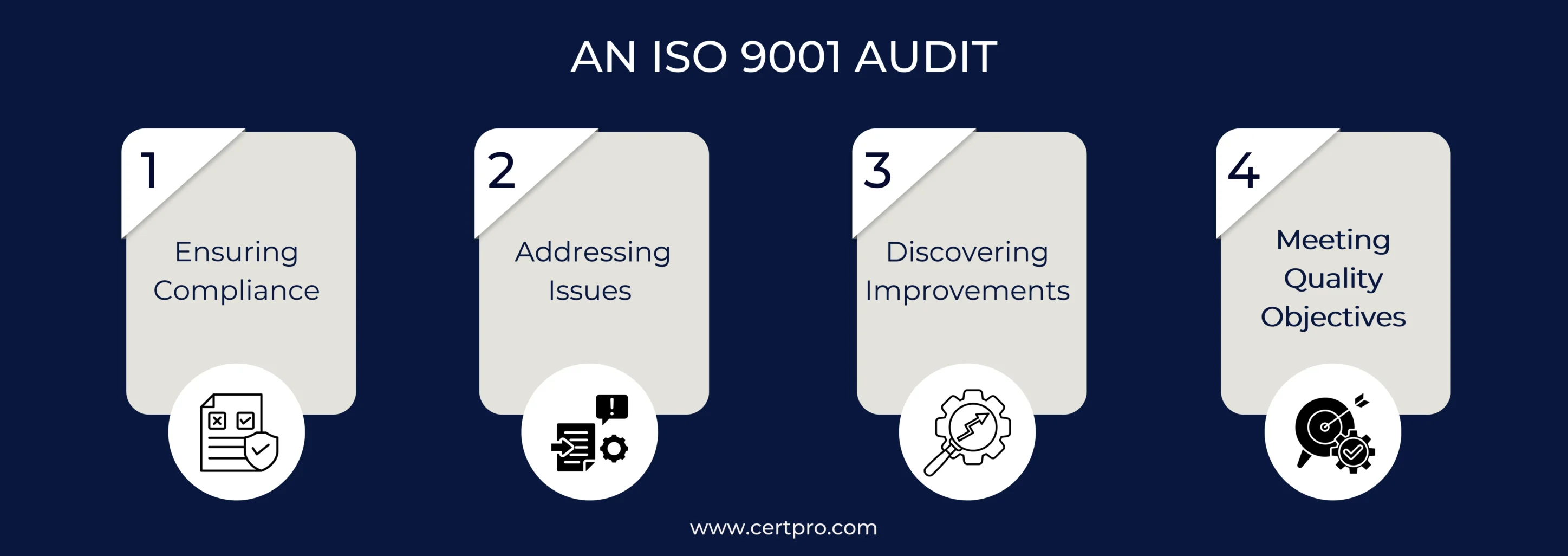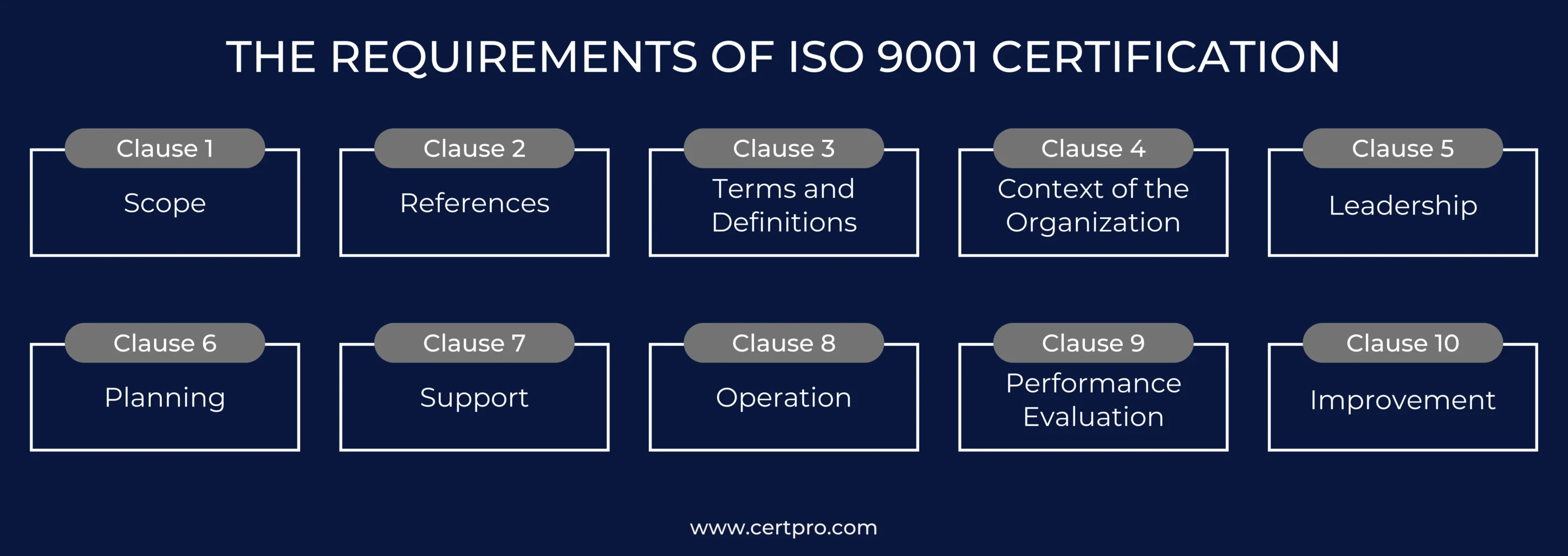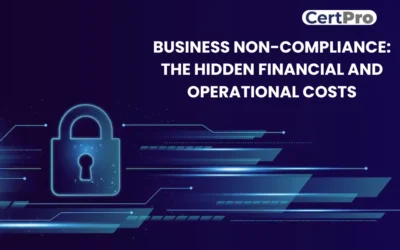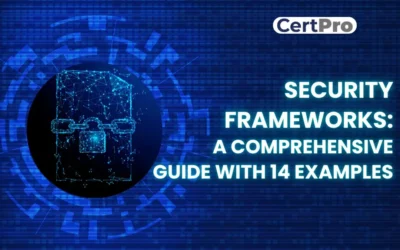ISO 9001:2015
QUALITY MANAGEMENT SYSTEM
The valuable standard ISO 9001 stands out in today’s fast-paced commercial environment. It gives businesses a precise road map, directing them toward expansion and adjustment. This structure allows companies to grow into new areas and adapt to their customers’ constantly shifting needs, making their goals more attainable. Additionally, implementing ISO 9001 has certain internal advantages. It enables companies to simplify their operations, which lowers costs and boosts productivity. By emphasizing optimization, businesses are better equipped to develop resilience and face obstacles head-on.
External improvements are not the only benefits, though. Furthermore, ISO 9001 accreditation proves a commitment to excellence. Moreover, businesses are able to both meet and exceed expectations. Building trust begins with prioritizing client satisfaction. Credibility consequently rises dramatically. Consequently, an organization’s scope and capabilities grow. Additionally, avenues open to international recognition. The ISO 9001 certification shows dedication. It demonstrates commitment to quality assurance. It also highlights continuous improvement. As a result, getting ISO 9001 has several advantages.

Certification and Auditing Services by CertPro for ISO 9001:2015
CertPro assists with ISO 9001:2015 certification, focusing on keeping costs low. Our staff helps businesses with the process and changes quality control methods to fit ISO standards. This helps cut costs and speed up the approval process while keeping the quality of the audits high and providing valuable solutions. CertPro’s method helps companies quickly get ISO 9001:2015 certification while giving excellent goods and services.
Why choose CertPro for ISO 9001:2015 certification and auditing?
CertPro is a significant partner in the ISO 9001:2015 certification process. Having worked with QMSs for almost decades, we have honed our skills and gained valuable expertise. Consequently, CertPro has the following compelling reasons to be chosen:
| Factors | CertPro Advantage |
|---|---|
| Time to Certification | 4x faster than traditional approaches |
| Price | Competitive rates with flexible options |
| Process | Streamlined and efficient methodology |
| Expertise | 10+ years of industry experience |
CertPro’s Cost-Effective Approach to ISO 9001:2015 Certification
ISO 9001 certification cost can be overwhelming. Various factors influence the expenses. Therefore, we offer a tailored pricing structure. Moreover, it is based on team size and the time required for certification. With our transparent pricing model, costs are precise. Furthermore, you can quickly determine your expenses. Here’s a breakdown of our pricing tiers.
| No. of employees | Timeline | Cost (approx.) |
| 1 – 25 | 4 weeks | 2500 USD |
| 25-100 | 6 weeks | 4500 USD |
| 100-250 | 8 weeks | 7500 USD |
| 250 plus | 8-12 weeks | Custom plans |
UNDERSTANDING THE QUALITY MANAGEMENT PRINCIPLES
ISO 9001 sets criteria for a Quality Management System (QMS). Organizations undergo auditing for compliance. This can be voluntary or third-party registration. Its requirements apply to any organization. The International Organization for Standardization (ISO) issues certifications. Certification is based on adherence to “Quality Management System requirements.”
Moreover, this certification has a higher-level structure. It includes risk-based analysis and enhances leadership requirements. This non-industry-specific certification suits enterprises establishing a QMS. Similarly, regular audits are necessary. These audits maintain ISO 9001:2015 certification and ensure ongoing compliance with standards.
ISO 9001 helps organizations consistently deliver high-quality products. It also ensures high-quality services for customers. Thus, it offers various benefits, like customer satisfaction, effective management, and motivating employees. It also details services, regulatory requirements, supported activities, and locations. Hence, it supports these operations by comprehensively understanding the organization’s core activities. This ensures that the quality management system reflects the essential functions and processes of the organization.
AN ISO 9001 AUDIT
Attaining and maintaining ISO 9001 certification requires an ISO 9001 audit. Furthermore, it provides several advantages:
-
Ensuring Compliance: The audit confirms that your quality management system (QMS) follows the ISO 9001 standard and ensures that everything meets the required standards.
-
Addressing Issues: The audit assists in locating and fixing any QMS issues. Additionally, it helps identify and address problems effectively.
-
Discovering Improvements: It helps you find possible areas for improvement in your system and encourages continuous improvement in your processes.
-
Meeting Quality Objectives: The audit ensures that your company takes the right steps to achieve its quality goals and aligns company actions with quality targets.
The ISO 9001 audit is a methodical, impartial, objective, and well-recorded procedure. It collects factual data so that you can pinpoint areas for development. Additionally, it helps create best practices. Constant improvement is a cornerstone of ISO 9001.

HOW TO GET ISO 9001 CERTIFICATION
Here is a detailed guide on how to get ISO 9001 certification:
Understand the ISO 9001 Standard: First, get familiar with ISO 9001. This globally recognized standard establishes the requirements of the Quality Management System (QMS). It offers recommendations to satisfy client needs, raises performance, and promotes client satisfaction. You must also understand its requirements and structure. Additionally, you need to know how ISO 9001 affects your company regardless of size or type.
Conduct a Gap Analysis: Following that, carry out a gap analysis. This step evaluates your current procedures and compares them with ISO 9001 standards. The gap analysis indicates regions that want development as well as compliant areas. Find particular gaps by comparing current practices to the norm. Nonetheless, this phase is essential to comprehend the state of your organization because filling in these gaps is required for compliance.
Develop an Implementation Plan: Based on the gap analysis findings, create an implementation strategy. This plan outlines the processes required to assign resources, establish deadlines, specify roles, and ensure a smooth transition to ISO 9001 compliance. Fulfilling ISO 9001 criteria is crucial because the plan serves as a roadmap and describes how to close holes that have been found. Therefore, efficient resource usage is ensured by effective planning, and all parties involved must also be aware of their roles.
Staff Training and Awareness: Ensure all relevant staff members are trained and aware of the requirements of ISO 9001. This includes instructional materials, workshops, and training sessions. Training improves comprehension of the fundamentals of quality management. By clearly defining the roles that employees play within the QMS, staff involvement promotes a culture of quality. Everyone ought to be dedicated to upholding ISO 9001 standards.
Establish QMS Documentation: Create the necessary documentation for your QMS. This includes policies, goals, practices, job instructions, and quality records. Appropriate documentation ensures a transparent and compliant operational framework with ISO 9001. Employees can use the documentation as a reference.
Implement the QMS: Implement the QMS throughout the company—record procedures to guarantee constant adherence. Thus, quality management should be incorporated into day-to-day activities. Consequently, constant practice ensures ISO 9001 compliance, aiding in obtaining the intended high-quality results.
Conduct Internal Audits: Conduct internal audits regularly. Evaluate how successful your QMS is. Usually, non-conformities and areas for improvement are found during internal audits. As a result, they assess ISO 9001 compliance. As a result, routine audits guarantee ongoing development and help you prepare for the certification audit.
Pre-Certification Audit: Pre-certification audits should be carried out before final ones because they can be done by either an internal or external team. This helps assess your certification preparation to find and close any gaps. Thus, ensure that everything is fulfilled to prepare for the certification audit.
Certification Audit and Surveillance: Allow an authorized organization to audit your certification. This audit assesses your adherence to ISO 9001 to determine whether you meet the standards for certification. If all requirements are met, you will be certified to ISO 9001. Moreover, routine surveillance audits following certification are performed. Surveillance audits and continual compliance preserve the QMS integrity.
Following these steps facilitates getting ISO 9001 certification. This demonstrates a commitment to quality management and enhances credibility. It guarantees high-quality goods and services, which raises customer satisfaction and ultimately brings about corporate success.

THE REQUIREMENTS OF ISO 9001 CERTIFICATION
The ISO 9001 requirements guide organizations in implementing a Quality Management System (QMS). They apply to all types of organizations. This is true regardless of size or sector. These requirements include ten sections called ISO 9001 clauses. Clauses 1 to 3 are optional. Clauses 4 to 10 are mandatory.
Clauses 1 to 3 cover Scope, References, Terms, and Definitions: Instead of placing restrictions, it define the parameters. Additionally, it offers references as well, and also provide definitions for the terms.
Clause 4: Context of the Organization: Clause 4 focuses on the Context of the Organization. It highlights the organization’s context. Understanding its operation is key. This involves meeting the needs of interested parties. These parties include customers, employees, and suppliers. It also helps in defining the scope and goals of QMS.
Clause 5: Leadership: Top management must show commitment to the QMS. They need to establish a quality policy. They should also assign responsibilities. Ensuring resources are available is crucial. Additionally, they must promote a culture of continuous improvement.
Clause 6: Planning: Clause 6 involves planning. It includes identifying risks and opportunities. Setting objectives is part of this clause. Developing plans is essential too. These plans should consider the organization’s context. They must also meet customer requirements.
Clause 7: Support: Clause 7 concerns support. It requires providing the necessary resources, establishing competent personnel, ensuring awareness and communication, and maintaining documented information.
Clause 8: Operation: It involves executing processes defined within the QMS. This includes operational planning and product realization. It also consists of controlling external providers and customer requirements.
Clause 9: Performance Evaluation: It monitors and measures performance, analyzes performance, measures customer satisfaction, and assesses the effectiveness of the QMS.
Clause 10: Improvement: Clause 10 emphasizes improvement. It requires implementing corrective actions and pursuing continuous improvement initiatives. Addressing non-conformities is essential. This enhances overall performance and meets customer expectations.
In summary, the ISO 9001 requirements guide organizations in implementing, maintaining, and improving a QMS. They apply to all organizations, regardless of size or sector. Clauses 1 to 3 are optional, while clauses 4 to 10 are mandatory. Understanding and applying these clauses helps organizations achieve quality management and customer satisfaction.

BENEFITS OF ISO 9001 CERTIFICATION
Obtaining ISO 9001 certification offers numerous benefits. Some key advantages include:
Enhanced Customer Satisfaction: Meeting client requirements is the primary focus of ISO 9001. Furthermore, it raises satisfaction. As a result, it generates more positive feedback. It also boosts loyalty.
Improved Quality Processes: Implementing ISO 9001 helps create efficient systems. This reduces errors. It also improves process efficiency. Consequently, it improves quality.
Increased Credibility and Reputation: The ISO 9001 accreditation shows a commitment to quality. It emphasizes client care. Thus, it raises the company’s reputation. It also boosts credibility.
Competitive Advantage: The benefit of ISO 9001 certification is its dedication to excellence. As such, it attracts potential customers. Moreover, it draws collaborators.
Better Decision-Making: ISO 9001 facilitates data analysis by permitting systematic data collection. This makes informed decisions easier and encourages ongoing progress.
Streamlined Operations: ISO 9001 enhances resource management and streamlines procedures. Moreover, it boosts operational efficiency and successfully promotes risk-based thinking.
Compliance and Risk Management: ISO 9001 certification guarantees compliance with legislation. Therefore, it lowers risks significantly. Additionally, it improves problem-handling capacity.
Employee Engagement and Empowerment: ISO 9001 promotes employee engagement. It empowers employees and encourages involvement. This, in turn, enhances teamwork. Additionally, it creates a pleasant work atmosphere.
Access to New Markets: ISO 9001 is globally accepted. It offers new business opportunities. Moreover, it provides access to new markets.
Continuous Improvement: ISO 9001 encourages constant improvement. It helps identify areas that need enhancement. Furthermore, it promotes innovation to keep you ahead.
ELIGIBILITY FOR ISO 9001 CERTIFICATION
An individual cannot become certified to ISO 9001. Certification is only available to businesses. Lead auditors can also be appointed by ISO 9001-compliant businesses. They can now audit other companies’ compliance as a result. Any business can also profit from ISO 9001 certification. Any location, size, or industry can use it. It also functions for all types of enterprises. Both small businesses and large multinationals fall under this category. It also doesn’t apply only to a single industry. Both governmental and private enterprises can obtain certification. As a result, ISO 9001 is flexible and widely used.
Furthermore, certification shows a robust QMS that meets ISO 9001 requirements. This system demonstrates a commitment to customer needs and continual improvement. Organizations like manufacturing, healthcare, and education seek this certification.
THE COST OF ISO 9001 CERTIFICATION
ISO 9001 certification costs depend on several factors, such as the organization’s size, complexity, and scope. The number of locations also affects the price. Furthermore, the chosen certification body plays a role. Generally, costs include initial assessments, documentation reviews, and on-site audits. In addition, certification issuance and surveillance audits are part of the ongoing costs. Smaller organizations with simpler processes usually pay less. Larger organizations with multiple locations pay more. Thus, complex operations increase prices, and certification bodies charge different service fees. The reputation and expertise influence these fees.
When evaluating ISO 9001 certification cost, long-term benefits should be considered. ISO 9001 certification improves quality management, enhances customer satisfaction, and increases market competitiveness. The investment can yield significant returns. Certification demonstrates a commitment to quality and attracts potential customers. Many prioritize certified suppliers and service providers. Therefore, the benefits often outweigh the costs.
ISO 9001 CERTIFICATION: VALIDITY AND RECERTIFICATION
Organizations usually hold ISO 9001 certification for three years. This period gives the organization the right to display the certification mark and adhere to the standard. However, periodic surveillance audits ensure validity and consistency with ISO 9001 requirements. Organizations need a recertification audit to extend compliance after three years.
CERTPRO ASSISTANCE IN ISO 9001 CERTIFICATION
CertPro can assist your business in obtaining ISO 9001 certification. We offer comprehensive auditing, consulting, and certification services. Their experienced auditors and consultants guide you through the process. We apply industry best practices and stay updated with compliance developments. CertPro conducts thorough assessments. We identify areas for improvement and assist in implementing quality management systems. CertPro provides expert guidance and documentation support. We also offer training to align your processes with ISO 9001 requirements. CertPro’s goal is to help your business achieve certification. This demonstrates a commitment to quality management. It also enhances your market reputation.
FAQ’s
WHAT IS A QUALITY MANAGEMENT SYSTEM OR QMS?
A Quality Management System (QMS) is a set of policies, processes, and procedures implemented by an organization to ensure that its products or services consistently meet customer requirements and quality standards.
HOW LONG DOES IT TAKE TO GET ISO 9001 CERTIFICATION?
The time required to obtain ISO 9001 certification varies depending on the organization’s size, complexity, readiness, and resources allocated. On average, the process can take several months to a year or more, including implementation, documentation, internal audits, and the certification audit itself.
WHO ISSUES ISO 9001 CERTIFICATION?
Accredited registrars or certification bodies (CBs) are responsible for issuing ISO 9001 certification. They conduct audits and assessments to evaluate an organization’s compliance with the ISO 9001 standard before granting certification.
IS ISO 9001 CERTIFICATION MANDATORY?
No, ISO 9001 certification is not mandatory. It is a voluntary standard that organizations choose to pursue to demonstrate their commitment to quality management and meet customer expectations. However, in certain industries or when participating in specific contracts, ISO 9001 certification may be required or preferred by customers or regulatory bodies.
HOW DO I SELECT A CERTIFICATION BODY?
When choosing a certification body, consider factors such as accreditation, industry expertise, reputation, cost, and geographical coverage. Verify their accreditation status, review client testimonials, and assess their ability to meet specific certification needs.
NAVIGATING DATA PRIVACY FRAMEWORKS: A COMPREHENSIVE GUIDE
Globalization has intense effects on business functioning and scaling. In today's digital world, companies are generating an unprecedented rate of data that requires protection from emerging cyber threats. In addition, recurring data breaches and privacy concerns make...
BUSINESS NON-COMPLIANCE: THE HIDDEN FINANCIAL AND OPERATIONAL COSTS
Businesses are always in a dilemma regarding whether or not to be compliant. Most companies think that compliance will problematize their operating process. However, highly regulated industries like financial and healthcare services meet the legal obligations for...
Security Frameworks: A Comprehensive Guide with 14 Examples
Technological advancements make cyberattacks more sophisticated and advanced. Hence, organizations must keep up with the latest cybersecurity frameworks in these complicated scenarios to sustain themselves in a dynamic threat environment. Different cybersecurity...



